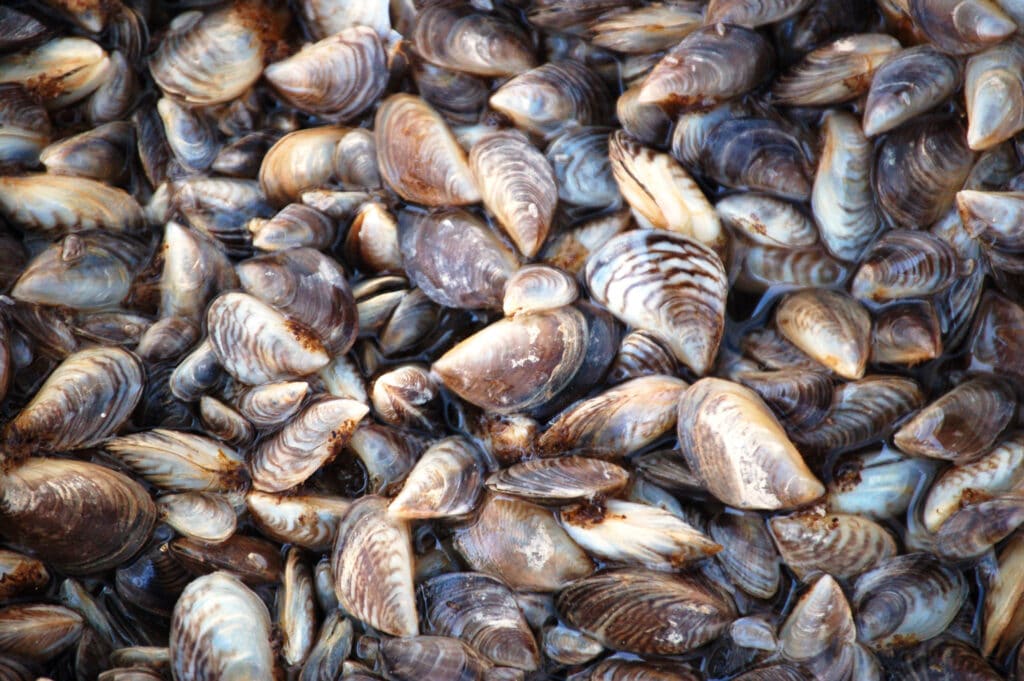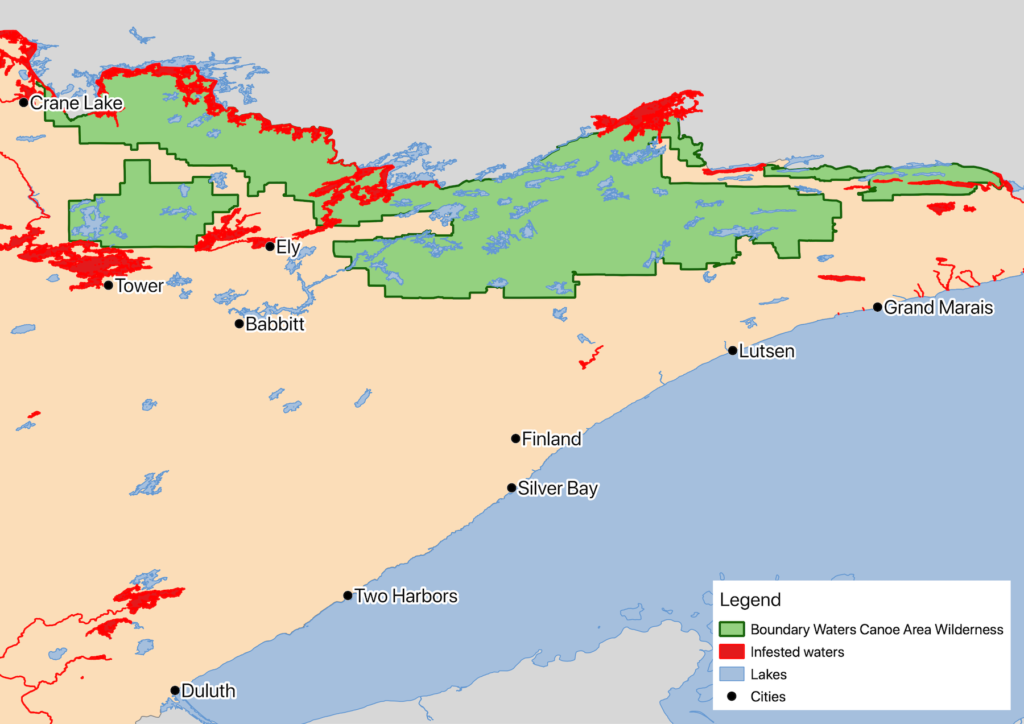
Invasive species threaten to drastically disrupt the ecosystem of the lakes and rivers in the Boundary Waters Canoe Area Wilderness. Nonnative organisms like zebra mussels, Eurasian milfoil, and starry stonewort have reached nearby waters, but the wilderness remains mostly uninfested — so far.
A new effort intends to keep it healthy. The primary focus of a new coalition focused on the issue is identifying threats and deploying resources effectively to prevent wilderness visitors from bringing aquatic invasive species (AIS) to the Boundary Waters.
There are two aquatic species known to have infested wilderness waters already — spiny waterflea and rusty crayfish — as well as several plants that grow in the water and on land. But many problem species that are plaguing other popular lakes in Minnesota have not yet made it into the wilderness.
A study last year found that the presence of spiny waterflea in a lake was connected to smaller average walleye and other fish sizes, as the invasive organisms outcompete the food fish eat, while remaining inedible themselves.
Participants in the group feel a sense of urgency to act while they have the upper hand. Last year came the news that zebra mussels had been found in Lake of the Woods, a popular and economically important lake downstream of the wilderness.
“The very real risk we face is that a headline could appear across Minnesota newspapers this very summer that zebra mussels were found in Basswood,” said Carrie Ohly-Cusack, an Ely area property-owner who is involved in the effort. “That would be devastating for the economy of northeastern Minnesota and a particularly bitter defeat for everyone seeking to stop the spread of AIS into Minnesota lakes.”
The interconnectedness of the waterways in the region is a particular cause for concern. With most major lakes connected by rivers, many invasive species can spread on their own, once introduced.

At the same time, there are numerous agencies and organizations with a stake in the region’s lakes, including multiple counties, federal agencies, a state and province, and two countries. Coordination is critical. The effort is being organized by the Minnesota Lakes and Rivers Advocates, with involvement from many other organizations and members of the public.
Lead organizer Jeff Forester points out that partnerships are an important part of AIS work, making efforts more cost-effective.
“Those of us focused on this issue do not think more money and more inspections are the only answer,” said Forester, executive director of the Minnesota Lakes and Rivers Advocates. “There are many practical alternatives that could be implemented immediately, and would save money. By using an organizing approach we hope to be able to build these partnerships and solve the problem going forward.”
Lake associations around the state are an active force in both protecting their lakes from invasive species, funding education, enforcement, mitigation, and other efforts, and in advocating for funding and policies at the state capitol. But there is no lake association for the Boundary Waters, so the coalition is seeking to bring some of the same strategies to keeping invasive species out of the 1,600 lakes in the wilderness as they have employed elsewhere.
The group is still in the early stages of planning, but is also taking action this boating season.
Projects for 2020 include adding nearly 1,000 more hours of invasive species inspection at lakes in the Kawishiwi River watershed south of Ely, and upstream of the Boundary Waters, conducting inspections for the first time on 18 new lakes in the area, reaching boaters that may not have received AIS education yet.
For more information, contact Jeff Forester, Minnesota Lakes and Rivers Advocates at jeff@mnlakesandrivers.org or 952-854-1317.
More information
- Minnesota Lakes and Rivers Advocates
- Non-native Invasive Species – Superior National Forest
- Coalition bringing AIS fight to Boundary Waters, The Timberjay

